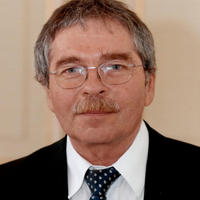Georg Bednorz
Johannes Georg Bednorz is a German physicist who, together with K. Alex Müller, discovered high-temperature superconductivity in ceramics, for which they shared the 1987 Nobel Prize in Physics.
Bednorz , from childhood, was more practically inclined, preferring to work on motorcycles and cars. In high school he developed an interest in the natural sciences, focusing on chemistry.
In 1968, Bednorz enrolled at the University of Münster to study chemistry and later opted to switch to crystallography. In 1972 he spent the summer at the IBM Zurich Research Laboratory as a visiting student. He met his later collaborator K. Alex Müller, the head of the physics department, also experienced the atmosphere of creativity and freedom cultivated at the IBM lab. After another visit in 1973, he came to Zurich in 1974 for six months to do the experimental part, he grew crystals of SrTiO3, a ceramic material Müller, himself interested in perovskites, urged him to continue his research, and after obtaining his master’s degree from Münster in 1977 Bednorz started a PhD at the ETH Zurich,under supervision of Heini Gränicher and Alex Müller. In 1982, after obtaining his PhD, he joined the IBM lab. There, he joined Müller’s ongoing research on superconductivity. In 1983, Bednorz and Müller began a systematic study of the electrical properties of ceramics formed from transition metal oxides, and in 1986 they succeeded in inducing superconductivity in a lanthanum barium copper oxide The oxide’s critical temperature (Tc) was 35 K, a full 12 K higher than the previous record. This discovery stimulated a great deal of additional research in high-temperature superconductivity on cuprate materials, soon leading to the discovery of compounds such as BSCCO (Tc 107K) and YBCO (Tc 92K).
In 1987, Bednorz and Müller were jointly awarded the Nobel Prize in Physics “for their important break-through in the discovery of superconductivity in ceramic materials”.In the same year Bednorz was appointed an IBM Fellow. Their discovery set off an avalanche of research worldwide into related materials that yielded dozens of new superconductors, eventually reaching a transition temperature of 135 kelvin. Today, he develops complex oxide compounds with novel crystal structures for possible uses in microelectronics.

Georg Bednorz
Date of Birth: 16 May 1950
Birth Place: Neuenkirchen, Germany
Proffession: German physicist
Nationality: Germany


